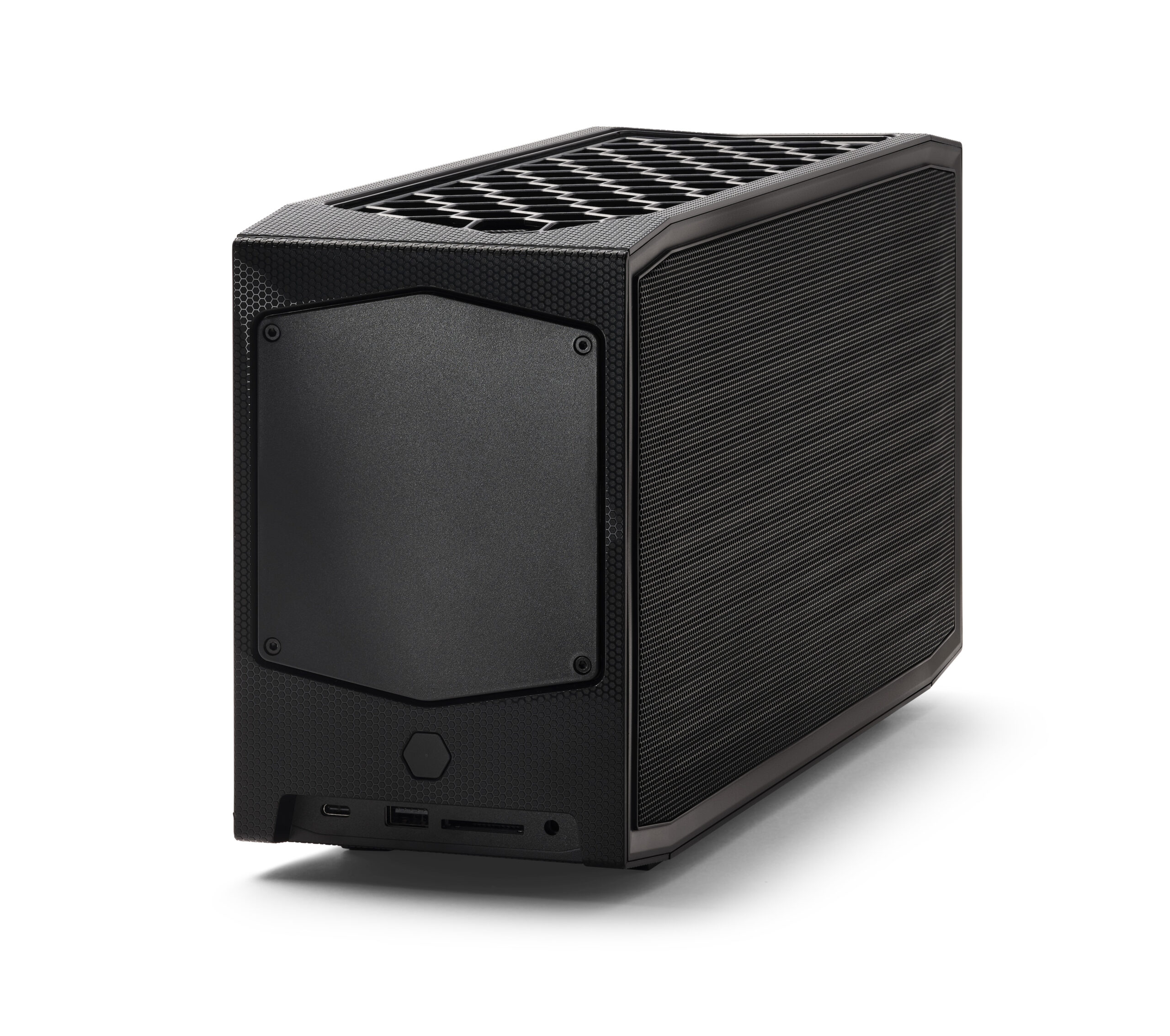DRAGON CANYON NUC12DCMV9/BAREBONE L6 NO CORD
Additional information
| Processor cache | |
|---|---|
| Processor manufacturer | |
| LAN controller | |
| Thunderbolt 4 ports quantity | |
| PCI Express slots version | |
| Bluetooth version | |
| Number of DIMM slots | |
| On-board graphics card model | |
| Non-ECC | |
| Number of displays supported | |
| Maximum internal memory | |
| Built-in processor | |
| Thermal Design Power (TDP) | |
| Status | |
| Processor generation | |
| Number of memory slots | |
| Ethernet LAN | |
| Storage drive interface | |
| Memory channels | |
| Memory bandwidth (max) | |
| HDMI version | |
| Wi-Fi standards | |
| ECC | |
| Processor boost frequency | |
| Built-in speaker(s) | |
| Processor family | |
| Processor threads | |
| Supported storage drive types | |
| Processor cores | |
| CPU configuration (max) | |
| L2 cache | |
| RAID levels | |
| Memory voltage | |
| Supported memory types | |
| Top Wi-Fi standard | |
| Processor model | |
| Audio output channels | |
| Motherboard chipset | |
| HDMI ports quantity | |
| Graphics card family | |
| On-board graphics card | |
| WLAN controller model | |
| SSD form factor | |
| Product colour | |
| Ethernet LAN (RJ-45) ports | |
| Card reader integrated | |
| Chassis type | |
| Intel® Optane™ Memory Ready | |
| Cable lock slot | |
| M.2 card slot (storage) | |
| Housing material | |
| BIOS type | |
| Bluetooth | |
| PCI Express x16 slots | |
| Width | |
| Power supply type | |
| LED indicators | |
| ARK ID | |
| Number of SATA III connectors | |
| Idle States | |
| Embedded options available | |
| Memory slots type | |
| Removable memory card slot | |
| Wi-Fi | |
| Harmonized System (HS) code | |
| Storage drive sizes supported | |
| Execute Disable Bit | |
| USB version | |
| Product type | |
| Compatible operating systems | |
| USB ports quantity | |
| Supported memory clock speeds | |
| Intel 64 | |
| Compatible memory cards | |
| Cable lock slot type | |
| Cooling type | |
| Number of SATA connectors | |
| M.2 card slot (wireless) | |
| Sustainability certificates | |
| Storage temperature (T-T) | |
| Operating temperature (T-T) | |
| Depth | |
| Height | |
| Power cord included | |
| Launch date | |
| Additional headers |
Intel® Virtualization Technology for Directed I/O (VT-d)
Intel® Virtualization Technology for Directed I/O (VT-d) continues from the existing support for IA-32 (VT-x) and Itanium® processor (VT-i) virtualization adding new support for I/O-device virtualization. Intel VT-d can help end users improve security and reliability of the systems and also improve performance of I/O devices in virtualized environments.
Intel® Virtualization Technology (VT-x)
Intel® Virtualization Technology (VT-x) allows one hardware platform to function as multiple “virtual” platforms. It offers improved manageability by limiting downtime and maintaining productivity by isolating computing activities into separate partitions.
Intel® AES New Instructions
Intel® AES New Instructions (Intel® AES-NI) are a set of instructions that enable fast and secure data encryption and decryption. AES-NI are valuable for a wide range of cryptographic applications, for example: applications that perform bulk encryption/decryption, authentication, random number generation, and authenticated encryption.
Max Turbo Frequency
Max Turbo Frequency is the maximum single-core frequency at which the processor is capable of operating using Intel® Turbo Boost Technology and, if present, Intel® Turbo Boost Max Technology 3.0 and Intel® Thermal Velocity Boost. Frequency is typically measured in gigahertz (GHz), or billion cycles per second.
Intel vPro® Platform Eligibility
The Intel vPro® platform is a set of hardware and technologies used to build business computing endpoints with premium performance, built-in security, modern manageability and platform stability.
Intel® Rapid Storage Technology
Intel® Rapid Storage Technology provides protection, performance, and expandability for desktop and mobile platforms. Whether using one or multiple hard drives, users can take advantage of enhanced performance and lower power consumption. When using more than one drive the user can have additional protection against data loss in the event of hard drive failure. Successor to Intel® Matrix Storage Technology.
Integrated Graphics
Integrated graphics allow for incredible visual quality, faster graphic performance and flexible display options without the need for a separate graphics card.
Intel® Optane™ Memory Supported
Intel® Optane™ memory is a revolutionary new class of non-volatile memory that sits in between system memory and storage to accelerate system performance and responsiveness. When combined with the Intel® Rapid Storage Technology Driver, it seamlessly manages multiple tiers of storage while presenting one virtual drive to the OS, ensuring that data frequently used resides on the fastest tier of storage. Intel® Optane™ memory requires specific hardware and software configuration.
RAID Configuration
RAID (Redundant Array of Independent Disks) is a storage technology that combines multiple disk drive components into a single logical unit, and distributes data across the array defined by RAID levels, indicative of the level of redundancy and performance required.
Intel® Platform Trust Technology (Intel® PTT)
Intel® Platform Trust Technology (Intel® PTT) is a platform functionality for credential storage and key management used by Windows 8* and Windows® 10. Intel® PTT supports BitLocker* for hard drive encryption and supports all Microsoft requirements for firmware Trusted Platform Module (fTPM) 2.0.


